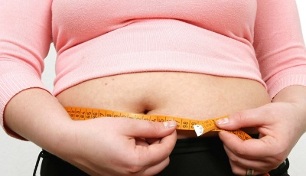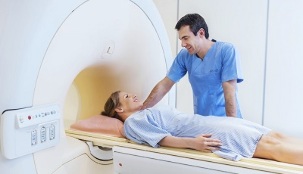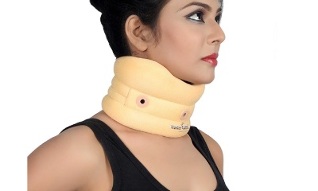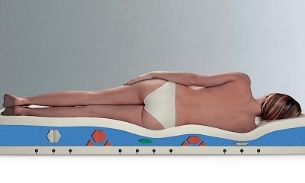Cervical osteochondrosis in women is a common disease. Fair sex representation over the age of 30 is most vulnerable to it. 75% of women face this unpleasant disease, while the consequences and severity of the disease are completely different.
Symptoms of cervical osteochondrosis in women

Symptoms of osteochondrosis in women can be detected already in the early stages, because the cervical spine discs are located close to each other and have a small height. Cervical osteochondrosis can lead to serious consequences - complications and even death. However, arteries pass through the neck area that feeds the brain, nerve endings and roots that have connections to the lungs, arms and heart, as well as the spinal cord. Therefore, you should not delay treatment with a good doctor.
In order for a woman to recognize cervical osteochondrosis, she needs to pay attention to the following signs:
- During head rotation, the neck feels itchy and an unpleasant painful sensation occurs;
- Occurrent occipital and temporal headaches;
- Shooting pain radiating to the neck;
- Fatigue, weakness and rapid fatigue;
- High temperature;
- Severe neck stiffness, difficulty turning the head;
- Unpleasant pain in the shoulder occurs when the arm is slightly loaded or when coughing;
- Numbness and tingling of limbs and tongue;
- Dizziness, dark eyes;
- Snoring in sleep;
- Difficulty swallowing;
- Anxiety, absurd fears;
- Cycle-free mood changes;
- Sleep disorders;
- Severe memory and attention impairment;
- Increased blood pressure (either increased or decreased);
- Pain in the heart, hearing loss and ringing in the ears, complications with vision are much less common.
- Nausea, vomiting;
- Skin looks bluish.
Cervical osteochondrosis can cause fever and poor health.
Important!Especially acute cervical osteochondrosis is experienced by women during climax.
Characteristics of female osteochondrosis
Osteochondrosis is a disorder of the musculoskeletal system, as the intervertebral discs and joints can collapse. Due to the structural features of the body, the symptoms of cervical osteochondrosis in women are more pronounced than in men. The fact is that the male shoulder area is wider, supports the entire spine, helps not to burden the neck.
The area of the female cervical vertebrae is characterized by high activity and the presence of a large number of nerve fibers that serve as conductors between the brain and other organs. Deformation of the intervertebral disc causes rapid pressure on the nerve endings of the nerve endings. Roughly speaking, women have brittle bone tissue and thinner bone.
Important!Pregnancy followed by childcare also exacerbates the problem. During pregnancy, the load on the spine increases, and breastfeeding in an uncomfortable and continuous position brings the baby into your arms causing the disease to worsen.
There are several stages in the development of cervical osteochondrosis:
- Decreased spinal position due to dehydration of the nucleus pulposus (the inside of the intervertebral disc, which should normally be filled with semi-fluid tissue and gelatin).
- Muscles and ligaments deteriorate, which causes imbalance, that is, vertebral displacement.
- Prognosis of intervertebral disc (outside its contents) and arthrosis.
- The human body seeks to help the spine return the "loose" vertebrae in place, removing support and protective barriers. For this, osteophytes appear in the vertebral bones - bone growth. Fiber tissue also grows. As a result, the motor segment of the spine is in a kind of shell that interferes with activity.
Causes of disease in women

It is believed that the incidence of cervical osteochondrosis in women is associated with salt deposits, but this is not the case. Osteochondrosis itself is a major cause of salt deposits. However, scientists argue that there are many reasons for the appearance of cervical spine osteochondrosis. Let's consider the key:
- Highlights. The fact is that the progesterone that enters the body becomes less and less, and the muscles in the cervical area also decrease. All of this leads to weakness of the spine;
- Weakness of the immune system, frequent illness;
- Overweight;
- Circulatory disorders;
- Vertebral artery anomalies arising against the background of birth, infection and hereditary trauma;
- Work is inactive, especially on computers;
- Kaki rata;
- Improper posture;
- Smoking and excessive alcohol consumption;
- Excessive exercise;
- The weight of the spine during pregnancy;
- Improper and unbalanced diet;
- Weak metabolism, metabolic problems;
- Any damage to the neck;
- Rheumatism or injury;
- Hormonal disorders in the body;
- Hypothermia;
- Descendants.
Being overweight puts extra pressure on the ligaments and joints, and also leads to problems with the cardiovascular system.
Why is cervical osteochondrosis dangerous?
Lack of treatment can cause a woman to have a disability. If you do not start treatment for osteochondrosis in a timely manner, then there is a risk of complications - from the smallest to the most severe:
- Persistent headache, dizziness.
- Sudden loss of consciousness.
- Hearing and vision problems.
- Blood circulation in areas of the brain will be disrupted.
- Frequent increase in blood pressure.
- Problems may start with the central nervous system: speech disorders, coordination, and behavioral disorders.
- Radiculitis and other back diseases.
- Vessels will be squeezed in the brain.
- Spinal displacement.
- Walking disorders due to spinal stenosis.
- Hernia and intervertebral protrusion.
- Hernia Schmorl.
Increased blood pressure in osteochondrosis may be associated with poor blood permeability in arteries traveling to the brain. Pinching arteries occur due to osteochondrosis.
Examination and treatment
Cervical osteochondrosis has many common symptoms with other diseases, therefore, before treatment, the neuropathologist listens carefully to the patient and collects anamnesis.
After that, a diagnostic test is performed:

- Radiography.Using X-rays of the cervical spine, the doctor determines the location of the disease. In the picture, he will see changes in the shape of the vertebral segments, the presence of osteophytes and narrowing of the intervertebral disc.
- Computed tomography or magnetic resonance imaging.Today, this is the most effective method of finding out what defects are and where they are located in the spinal space.
- Myelography.For examination, contrast fluid is injected into the spinal cord. The procedure is unsafe: the patient may have allergies and there is a risk of spinal cord injury if the puncture is not successful. However, with cervical osteochondrosis, such studies are rare, unless you need to look at the entire spine.
MRI will help diagnose and determine the stage of pathological development accurately.
To cure cervical osteochondrosis, doctors prescribe complex treatments. The objective of therapy is to relieve muscle spasms, relieve pain, and reduce intradiscal stress. At different stages of disease development, different types of therapy are used.
Typically, treatment goes through stages:
- Medicine.Restoration of cartilage tissue using chondroprotectors. For blood supply to the brain, vasodilating drugs are used. All of the above will eliminate inflammation, pain syndrome and improve metabolic processes in the intervertebral disc. Painkillers and anti-inflammatory drugs in the form of gels or tablets are used as first aid. They can give nootropic drugs and drugs with magnesium. With osteochondrosis, sedatives can be taken, as long-term illness can cause stress and depression. Sometimes enough to drink tincture of motherwort or valerian.
- Physiotherapy.Aims to eliminate disorders in the affected spinal area, relieve pain syndrome, improve blood circulation. Good massage from a competent specialist, electrophoresis with anesthetic solution, as well as laser therapy can help in the early stages of the development of the disease. The procedure relieves muscle tension and stimulates blood circulation. In severe cases, magnetotherapy, diadynamic currents, ultrasound, electroanalgesia and ultraviolet rays are used. Physiotherapy affects after the 3rd procedure, general condition improves, insomnia, headache and ringing in the ears disappear.
- Manual therapy.This treatment has good efficiency and grateful reviews. The chiropractor will return the vertebrae to their place in a few sessions, providing proper mobility and posture.
- Acupuncture.This is also called reflexology. Its purpose is to influence the transformation of dystrophy into muscle tissue, eliminate inflammation and pain, and normalize blood circulation. Women with low pain scores have a good chance of recovery, their lymph flow is accelerated and blood flow normalizes.
- Orthopedic treatment.Specialists will provide special sleeping pillows to relax the spinal canal. Underwater traction (traction) is also recommended to relax the muscles from the action of warm water. Attraction involves the use of various tools to enlarge the intervertebral space.
- Proper and clean nutrition.By giving the body healthy fats, carbohydrates and proteins, as well as minerals and vitamins, a woman can significantly speed up the healing process.
- Physical activity.Doctors can prescribe physiotherapy exercises and special exercises for the cervical spine. Physical education aims to restore the mobility of the neck collar zone and blood supply. It corrects posture and strengthens the muscular corset. In addition, regular exercise, for example, in the gym, will prevent cervical osteochondrosis from developing.
- Wearing a corset.There is a special tool for the cervical spine called the collar. It is rigid and stable. Wearing a collar will eliminate pain syndrome, improve body posture and speed recovery.

When choosing a collar, it is necessary to choose the correct product height. To do this, it is necessary to measure the distance from the clavicle to the angle of the mandible.
Home Treatment
In order for the disease not to spread, or to be diagnosed at an early stage, a woman needs to monitor her health, diet, and lifestyle.
To alleviate the situation, at home you can use folk recipes:
- Grate the peeled potatoes on a fine grater, add a little honey to it and mix. The resulting mixture must be applied to the cervical spine, to the most painful place. Repeat the treatment once a week.
- Rinse the carrot leaves and apply to the affected area. Cover the compress with a bandage and sleep through the night. Usually in the morning you can feel relief and improvement. For greater effect, the procedure should be repeated for 3 days or more.
Cervical gymnastics should be performed to strengthen the neck muscles and restore mobility to the spine. Exercises can be done for prophylaxis, but you should practice smoothly and without sudden movements so that muscle spasms do not occur:
- Lean forward.Sit down, place one palm on your forehead and tilt your head forward while fighting with the palm of your hand. Tilt one - 10 seconds. After resting for a while, repeat the exercise again.
- Tilt to the side.Sit down, place one palm on your head in the temple area. Tilt your head to the side while pressing down with your palms, pushing. Continue for 10 seconds. After resting, repeat the exercise.
- Turns to the side.Sit in a chair, or stand, lower your arms along your torso. Rotate your head smoothly to the extreme right position, then to the extreme left. Repeat 10 times.
- Shoulder.Sit or stand, arms lowered along the body, lift the shoulders as much as possible and hold in this position for 10 seconds. Next, lower your shoulders, take a deep breath, rest for 15 seconds. Repeat 10 times.
- Tilt to the chest.Sitting or standing, arms lowered along the body. Lower your head smoothly, trying to press your chin to your chest as much as possible. With good movement of the cervical vertebrae, you can feel the thoracic notch with the chin. Repeat about 10 times.
- Touch the ear to the shoulder.Tilt your head back. Try touching the left ear to the left shoulder, repeat 5 times. Do the same with the right side.
- Tilt down.Release your chin to your neck. Turn your head 7 times to the left, then 7 times to the right.
- Neck muscle endurance.Throw your head back, but not completely. Gently press the chin to your chest, overcoming the endurance of the muscles of the cervical area. Do it 5-7 times.
- Swing your arms.You need to perform a circular motion with both hands in one direction, then in the other.
- Sort.Sitting or lying down, massage the area between the occiput bone and its soft part, at the conditional junction area of the head and neck, alone or with the help of others. The effect must be strong enough, do it in 4 minutes.
Important!In case of cervical osteochondrosis, you should not perform circular movements with the head, as this can cause injury.
Prevention
- Doctors say that prevention of cervical spine osteochondrosis should occur even in the uterus, during embryonic development. Pregnant women must exclude risk factors associated with future fetal illness, monitor their health to prevent intrauterine infection, hypoxia and poisoning.
- Both parents should monitor their child's injuries and see a doctor in a timely manner to make a diagnosis to avoid possible complications in the future.
- It is very important for girls and adult women to pay attention to the prevention of cervical osteochondrosis, as this should change your lifestyle. You need a lot of walking, taking at least 10 thousand steps a day, gradually increasing the amount of time spent walking. If work activities are associated with an inactive lifestyle, you need to do moderate exercises for office workers right at the desk, as well as getting up, warming up and walking every hour. Sit in a chair with a high backrest. It is also important to avoid furniture that is too soft as the body must be supported by a iskial tubercle.
- While driving a car, it is important that your back has good support, you can place a roller between your lower back and your seat. Try to keep your head straight and sit relaxed.
- It is dangerous to be in the same position in front of a computer screen and a TV screen. From time to time, you need to change position so that the muscles can flex.
- For those who suffer from cervical osteochondrosis, it is best to do housework such as ironing or cooking while sitting.
- To prevent osteochondrosis, it is necessary to avoid excessive pressure on the spine and cervix. Bags and packages should be carried in both hands, or alternately. While working in gardens and orchards, every 1. 5 hours you need to rest for 20 minutes and rest, preferably in a horizontal position.
- To soften the shock while walking, you need to choose comfortable orthopedic shoes with elastic soles.
- In winter, a woman should protect the neck collar zone from hypothermia with a scarf and hat.
- The sleeping mattress must be firm, and you can also place a pillow under the lower back, knee joint or under the abdomen, depending on its position.
- For the prevention of osteochondrosis, it is necessary to take a general strengthening massage course. It will help prevent the onset of the disease, as well as cure it at an early stage.
- It is important for a woman to cope with stress and monitor psychostability, as nerve shock can cause damage to the cervical spine.
- To prevent disease, it is important to eat foods that are good for the spine, to synthesize its cartilage tissue. Protein, mucopolysaccharides, minerals, vitamins can be obtained from meat, legumes, nuts, vegetables, gelatin, fish, eggs, cottage cheese.

When choosing a mattress that is right for you, you should take into account many factors, such as skin color, height, weight, filler and most importantly, the stage of development of osteochondrosis.
Important!Swimming in a pool or pool will be a very useful activity for women with cervical osteochondrosis. But it is better to refuse the bath and sauna while worsening the situation.
Cervical osteochondrosis is a disease of all women, whose problem is an inactive lifestyle. These are many professions: accountants, cashiers, tailors, musicians, writers and others. During the remission period of the disease, it will be useful for women to visit sanatoriums and resorts, where they can strengthen the neck muscles, vascular system and heal the body. A timely visit to the doctor is the key to a successful recovery.












































